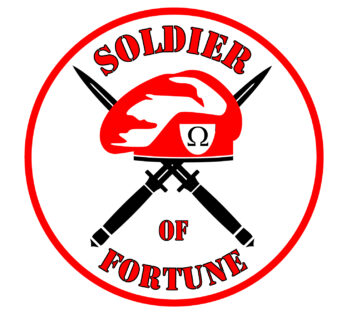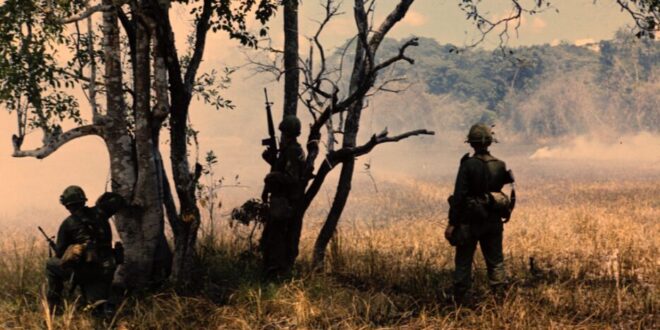COMMENTARY by Susan Katz Keating
Fifty years of Soldier of Fortune brings one question repeatedly to my inbox: Where did this all begin? The answer is not a mystery; it’s history. Soldier of Fortune grew from Vietnam, and its legacy still drives us today.
To understand Soldier of Fortune, you have to step back into the world that inspired it. You have to look at the times; and at the warriors themselves, and how they were treated.
Between 1964 and 1973, more than 8.7 million Americans served in the U.S. armed forces. Two-thirds were volunteers. Those who went to Vietnam found themselves in a war against the enemy, but also undermined by so-called “peace” activists and a hostile or naive press back home. Actress Jane Fonda, who was not charged with treason for her actions in North Vietnam, told a seemingly unblinking Associated Press in 1973 that American prisoners of war were “hypocrites and liars.” What a slap to those who were fighting for their lives, and to their families. In terms of the war itself, the Tet Offensive in 1968 was a decisive battlefield victory for American troops. The media reported it as a defeat. That single distortion told Americans that their sons were fighting – and dying – for nothing.
READ MORE: Who Reads Soldier of Fortune? 50 Years on, We Open the Files
When the troops came home, they did not return to ticker-tape parades, as they did after World War II. They weren’t quietly ignored, as they were after Korea. Instead, society turned openly on the soldiers themselves.
“It was ‘oh, shit’ time when I came back,” my friend and former POW Nick Rowe told me. Nick had clung to images of America to survive five brutal years in captivity, only to return and find himself despised by the very people he loved.
At Norton Air Force Base, David Riley and his fellow combat vets were told to strip off their uniforms, change into regular clothes, and “look as civilian as possible, because we weren’t liked in the U.S.” He thought: This is the grand welcome home?
One officer who landed in San Francisco in 1969 couldn’t believe what awaited him at the airport. Protesters stood in the lobby holding signs for Ho Chi Minh and the Viet Cong. They called American soldiers “baby killers.”
The attitude hardened into caricature. Newspapers began printing crime headlines with a new twist: “Vietnam Veteran Robs Bank;” “Vietnam Veteran Kills Woman.” The implication was clear: if you fought in Vietnam, you came home dangerous, unhinged, and psychotic. The myth was so wrong it was almost unfathomable. But people believed it.
The damage to soldiers was real. Society pushed them to the margins. Some imploded. Vietnam veterans were 1.7 times more likely to die by suicide in the first five years after discharge than their civilian counterparts.
That was the America in which Soldier of Fortune was born.
The magazine was founded as a quarterly in 1975 by a badass Vietnam veteran, Robert K. Brown. He and his cohorts – among them the irrepressible John Donovan and Al Venter – soon embarked on escapades to Africa, where they found adventure. And wrote about it.
The fledgling subscribers noticed, and word spread. Soldier of Fortune refused to accept the popular misconceptions. Soldier of Fortune rejected the lies. It said, no. This is not the legacy of America’s warriors. This is not the story of the men who bled in the jungle and fought house-to-house in Hue. It would not allow American adventurers to be defined by those who never walked the walk, or who had agendas.
Soldier of Fortune became the rally point. It gave Vietnam vets a place to own their stories, and to carry the warrior spirit forward.
In 1980, the Russian state news agency TASS wrote that SOF supporters were a collection of hired assassins. It wrote that they were “professional gangsters and mercenaries ready at a moment’s notice to rush to far-flung areas in order to kill and hang people, and overthrow legitimate governments.” Today, people still take occasional swipes at our readers – claiming, for example, that they are “basement dwellers” or “wannabes.” Neither could be further from the truth. Not in 1980, and certainly not now.
In 1975, Soldier of Fortune told America what it didn’t want to hear: that its fighters were not misfits nor monsters, but are men of action who carry adventure, risk, and resilience in their blood.
Today, as I have been at the helm of this touchstone publication for three years, I am deeply impressed by the quality of people who read it. Our audience primarily is men aged 25 to 44, with a fiercely engaged group aged 45 and older. The majority are U.S.-based, with strong numbers in the UK, Canada, and beyond. These people are sharp, worldly, and unafraid to go deep into the weeds of real-world conflict, survival, and strategy. They have marvelous senses of humor, but they also take seriously the world of security.
I also see parallels to post-Vietnam. Our readers don’t hide their admiration for heroism, courage, and grit. They don’t want to redefine masculinity. They want adventure. They want action. Just like they did after Vietnam.
Vietnam was a cultural crucible. It was the war that American society tried to bury. It shaped the men who fought it, and it shaped the publication that would rise to embrace them. That is why you cannot separate Soldier of Fortune from its roots. The publication that was born from the fires of Vietnam still proudly embraces the warrior spirit.
Fifty years on, we are still here. Still telling the stories others do not. Have you read Greg Chabot lately? Heath Hansen? Austin Lee? Cliff Wade? You should. Their work is deeply informed, authentic, raw, and at times screamingly funny. They and the rest of our writers set a high bar. They keep Soldier of Fortune front and center; a must-read for our community.
Here’s to 50 years of never backing down.
And here’s to those who inspire us daily.
Susan Katz Keating is the publisher and editor in chief at Soldier of Fortune.

 Soldier of Fortune Magazine The Journal of Professional Adventurers
Soldier of Fortune Magazine The Journal of Professional Adventurers






